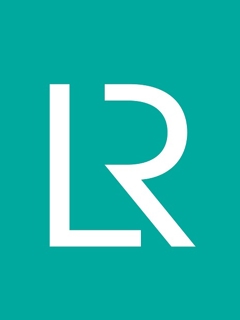Nuclear powered ships and offshore installations were in the ‘hard-to-do’ box as little as a year ago. The last eight months have seen terrific interest and progression in both offshore and shipping projects for nuclear power. The focus has been on nuclear technology and its proposed applications; remote power generation, decarbonisation of hydrocarbons, hydrogen production and how to power large ships.
Power on demand
Ship designer and builder Ulstein has been considering those applications. They’ve created a concept for a vessel that houses a small nuclear reactor, providing power to battery-driven vessels, when and where it’s needed. The reactor would use a Thorium Molten Salt Reactor (MSR) as its power source, hence the project’s name, Thor. It’s initially intended to operate in areas where there are limited options for bunkering, for example polar regions. Ulstein’s designers envisage Thor as a provider of green power to cruise ships, while simultaneously supporting research and rescue facilities.
Because of the energy density offered by nuclear power, Thor does not need to be physically large, says Ulstein’s CEO, Cathrine Kristiseter Marti; “We have the goals, ambition and environmental imperative to switch to zero-emission operations, but, until now, we haven’t had the solution. We believe Thor might be the answer we’ve been looking for. Thor is essentially a floating, multi-purpose ‘power station’ that will enable a new bleed of ship designs."
Ulstein’s Chief Designer, Øyvind Gjerde Kamsvåg, is looking beyond Thor’s immediate functionality as a zero-emission, remote power replenishment facility, pointing out how it could be used as an emergency power supply for regions hit by natural disasters, epidemics, or conflicts. It would also be a test-bed for MSRs as integrated power sources for ships, something that hasn’t been done before. He says, “I think the timing has been absolutely critical. We have been thinking about Thorium and nuclear vessels since 2008, but we didn’t know if the industry was ready. Now, clearly, it is!”


Regulation to meet the needs of advancing technology
A molten salt reactor is the power source that allows the idea of nuclear-powered ships to exist, even if only in conceptual form. The reactors work by dissolving Thorium – an abundant, naturally occurring metal with low radioactivity – in liquid salt. This creates a chain reaction that heats the salt, producing steam to drive a turbine and generate emission-free electricity. MSRs have higher thermal efficiency and lower waste generation than reactors cooled by gas or pressurised water, as used in most land-based power stations. MSR technology is proven and safe, with several designs being developed around the world, though an MSR has yet to be incorporated into a vessel design.
As technology advances, so must regulation, to ensure safe, sustainable operation. Lloyd’s Register’s expert on this, Global Offshore Power-to-X Segment Leader, Mark Tipping, has been having conversations with many interested parties about how regulations could work. “Without forming any official position from Flag states, and based on a postulated position from LR, we can start to talk about some basic assumptions for vessels such as Thor.”
A baseline of regulation is a good starting point, as Mark explains; “IMO requirements are the primary driver, and the nuclear element would be additional to standard requirements. While SOLAS Chapter VIII provides the international basis for applying nuclear technology, it was written at a time when only pressurised water reactors were considered, along with a traditional approach to machinery spaces. In addition to pressurised water reactors, molten salt, heat pipe and nuclear batteries are also considered viable options for nuclear power. So, the regulations will need modifying.”
That covers the maritime element, but not the nuclear regulations. Mark Tipping thinks the easiest solution for a nuclear ship would be to have Flag State and nuclear regulator from the same country, and by extension the operator of the ship. These elements would provide the basis under which the ship can be Classed; “This description only provides the framework, the detail of a design, construction and through-life assurance program still need to be developed, at the moment on a project-by-project basis. Nevertheless the regulatory pathway exists, and a ship could come into being under this framework.”
Front runner
The maritime industry is still years away from the widespread adoption of zero-emission fuels, with small modular nuclear reactors such as MSRs in the mix as a contender for zero-carbon power sources of the future, according to Lloyd’s Register’s Zero Carbon Fuel Monitor. Since launching the Thor concept earlier this year, Ulstein has gained further insight into the implementation of MSR on vessels and identified some of the areas where further research and development needs to take place. One of the initial challenges – load variation – seems to be easily handled by small reactors, simplifying their implementation on ships.
But the reality is there need to be working prototypes to advance the technology. Ulstein’s Chief Designer, Øyvind Gjerde Kamsvåg says their concept is feasible, with the right drive and support; “If asked to give a conservative estimate I’d say 10 to 15 years before all the pieces are in place to launch Thor into operation. But, when there’s a very clear need, it’s human nature to supercharge innovation to achieve goals.”







